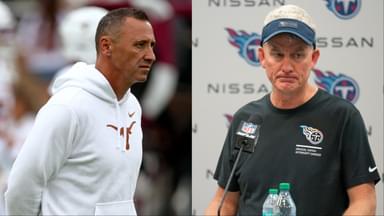Unlike other global sports, such as baseball, basketball, and soccer, American football is primarily played in only two countries. In America, there is the NFL. It’s arguably the largest single sports league in the world in terms of revenue and eyeballs, despite not having much of a global footprint. Then there’s the Canadian Football League. It’s generally viewed as the lower level of football, but Chad “Ochocinco” Johnson has a different opinion.
Advertisement
Johnson was once one of the biggest names in the NFL. He wowed crowds with his footballing abilities and celebratory antics, earning six Pro Bowls and three All-Pro nods for the Cincinnati Bengals during the 2000s. But by 2012, he was 34 and out of the league. So he took his talents to the CFL, where he played just a few games due to nagging injuries.
He managed seven receptions for 151 yards and one touchdown in five games for the Montreal Alouettes in 2014. Ochocinco’s refusal to turn up for camp the next year, however, led to his suspension for the entire 2015 season. Despite that, Johnson recalls his time in Canada fondly. Surprisingly, he also believed that many grossly underestimated the quality of play in the league.
“I enjoyed my time in Canada. It was eye-opening. Because I expected one thing, or people said one thing about the CFL, and I actually got there, and I was like, ‘Okay, ya’ll lied to me. The people down in the States, ya’ll lied to me.’ Because every week … whether it was Ottawa … whether it was Calgary or Toronto. … I done played in the NFL for 11 years. And every week, while I’m up there in Canada, I’m seeing dudes that belong in the NFL.”
It is worth noting that Canadian football is markedly different from American football, though the spirit is the same. And, depending on who you ask, Canadian football might have preceded the American version by some years. That goes back to the Reconstruction period in the second half of the 19th century. But more specifically, the CFL’s Grey Cup was first awarded in 1909, 11 years before the NFL was consolidated. Make of that what you will.
In Canadian football, there are 12 players on the field rather than 11, and three downs to make 10 yards instead of four (which makes it a much more pass-happy league). The field is 110 yards long rather than 100, and the end zones are 25 yards deep rather than 10. The goalposts are on the goal line (as they used to be in the NFL) rather than behind the end zone, and a team can score a one-pointer—called a “rouge”—if they kick or punt a ball through the end zone or if the opposing team fails to run it out. The ball is also shaped slightly differently.
But the rest is the same. Offense, defense, special teams. Same pads, same helmets. And Johnson, who had a career in the NFL that one could reasonably call “Hall of Fame-caliber,” believes that the level of play there is closer to the NFL than some might think.
“I thought it was supposed to be easy, and I’m just gonna go out there and [dominate]. Man, please. Them young bulls out there in the Canadian league, the only reason they’re not down here in the NFL is because of the numbers. Because of politics, because of certain situations that might have happened in college. There’s really no difference, Unc. And I’m saying this very respectfully. But, my time was different, obviously.”
The biggest difference is obviously the revenue. While football is by far the biggest sport in America, it lags way behind hockey in Canada and probably baseball and basketball as well. In the CFL, the minimum salary is $70k. In the NFL, the rookie minimum is $795k, and for veterans, it’s $1.2 million.
Despite the negative perception thrown at the CFL by basically everyone except Ochocinco, there have been a few success stories that saw CFL stars make it big in the NFL. The most notable of these was QB Warren Moon.
He played six years in the CFL for the Edmonton Eskimos, winning five Grey Cups and one CFL MOP (their version of MVP), before moving on to the NFL’s Houston Oilers. He went on to a Hall of Fame career that included nine Pro Bowls.
Other notable success stories include QB Joe Theismann (1983 NFL MVP), diminutive QB Doug Flutie (six CFL MOPs, three Grey Cups, arguably the greatest player in CFL history), and QB Jeff Garcia (Flutie’s CFL backup, 1998 Grey Cup MVP, four-time NFL Pro Bowler). Pass-rusher Cameron Wake (two-time CFL DPOY, four-time NFL All-Pro), and WR Joe Horn (1,000 yards in only CFL season, four-time NFL Pro Bowler) also transitioned successfully.








